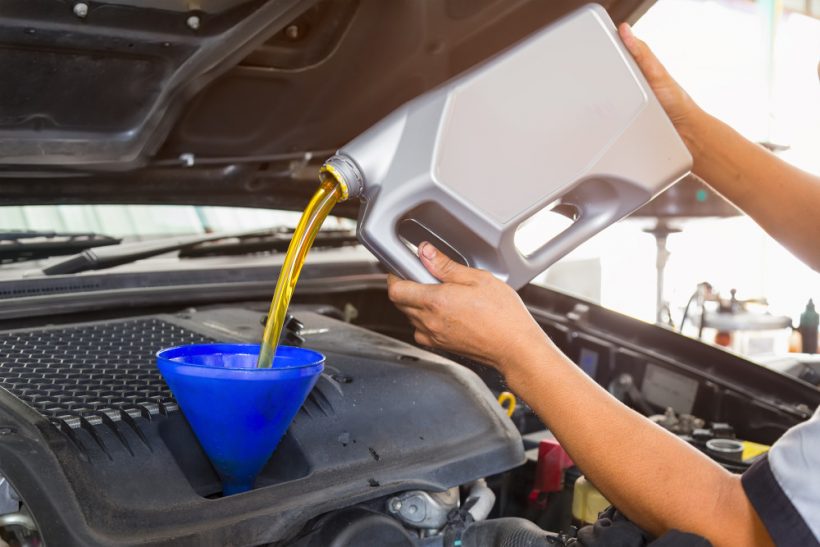One of the most important things you can do to take care of your vehicle is to follow a thorough maintenance schedule. But what does car maintenance entail, exactly? Most people know the more obvious things like rotating tires or changing the engine oil. And while an oil change is critical for your engine’s health – allowing oil to properly flow in a car’s engine and reduce friction that could damage your vehicle – it’s not the only car part that benefits from lubrication.
In the past, nearly every portion of a car needed some form of lubrication or grease. That number has been cut down with the invention of some permanently lubricated designs for certain parts; ball joints and rod ends no longer require tedious maintenance. In today’s age, the parts that need lubrication are the ones that you probably don’t think about very often: your wheel hubs, door hinges, hood latches, and windshield wipers.
Your car might be different, of course, and learning to replace your car’s engine oil is the toughest of the bunch. It’s something that people generally pay a mechanic or car dealer to take care of, but it’s also something that you can learn to take care of at home.
Today, we want to make you an expert as well. Here’s the equipment you’ll need and the steps to take to learn how to replace car lubricants.
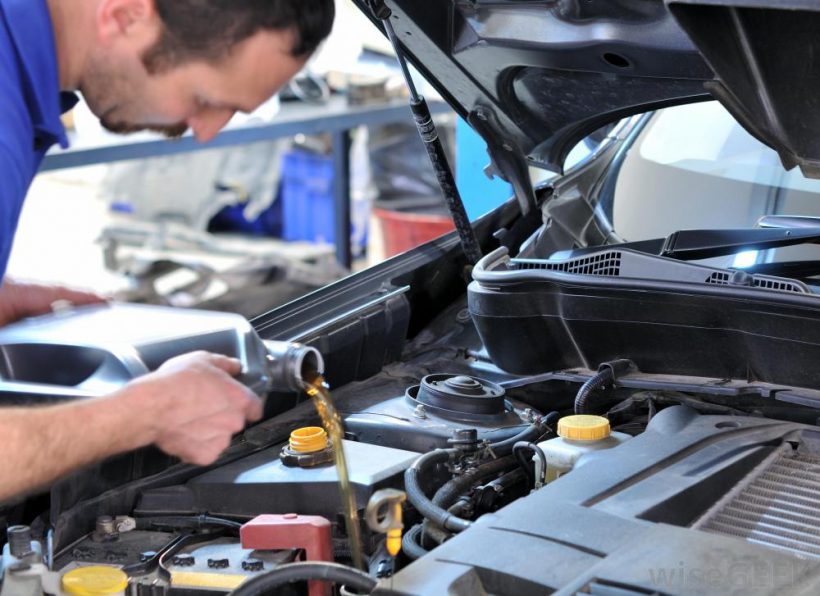
Car maintenance equipment
Before opening your vehicle’s hood and starting to do anything to your car, it’s important to gather all the equipment you might need for the job. That includes the obvious – your chosen engine oil, socket wrenches, and a spray grease – and things that you might need like rags and newspapers to keep your work area tidy. Here’s a complete list of what you’ll need to change your engine oil:
- Engine oil – In general, the first step to selecting an engine oil is to consult your car manual. Manufacturers will provide instructions on what types of lubricants to use and how much you’ll need for an oil change. If you’re looking for a wide selection of lubricants, Mystik Lubes has oils available not only for cars, but industrial vehicles and power equipment as well.
- A quality oil filter – Consult your manual on your oil filter as well; there is enough variation here that it pays to be certain before buying one.
- A socket wrench
- You need to have an oil filter wrench
- A funnel, for properly measuring and pouring your oil
- A safe container to catch and dispose of the old motor oil
- Rags
- Newspapers
Gently drain the already used up motor oil
Before beginning to drain the old lubricant, ensure you start your vehicle and allow it to run for around two or three minutes. If you’d prefer, you can also take your car out for a quick drive. The goal of this is to warm up the old oil, which will help it to drain without any issues.
Next, prepare a safe spot to carry out your oil change. A garage or driveway will work just fine, so long as the ground is flat and provides you enough room to maneuver underneath your vehicle.
Beneath your car, the first step is to locate your drain plug and oil pan. They’re generally fairly easy to spot, but it would be wise to consult your manual for a picture of the part that you’re specifically looking for. After identifying the drain plug, carefully spread the newspaper and place the oil pan on it. Slowly loosen the drain plug using a socket wrench. Turn the drain plug counterclockwise.
After you have finished loosening the plug, use your hands to carefully remove it and set it to the side. If done correctly, the oil should drain into the pan without any issues. The oil might still be hot, depending on how long you ran your engine, so be careful not to touch it as it drains. Once the oil is finished draining, reinstall the drain plug by turning it clockwise until it’s secure.
Replacing the oil filter
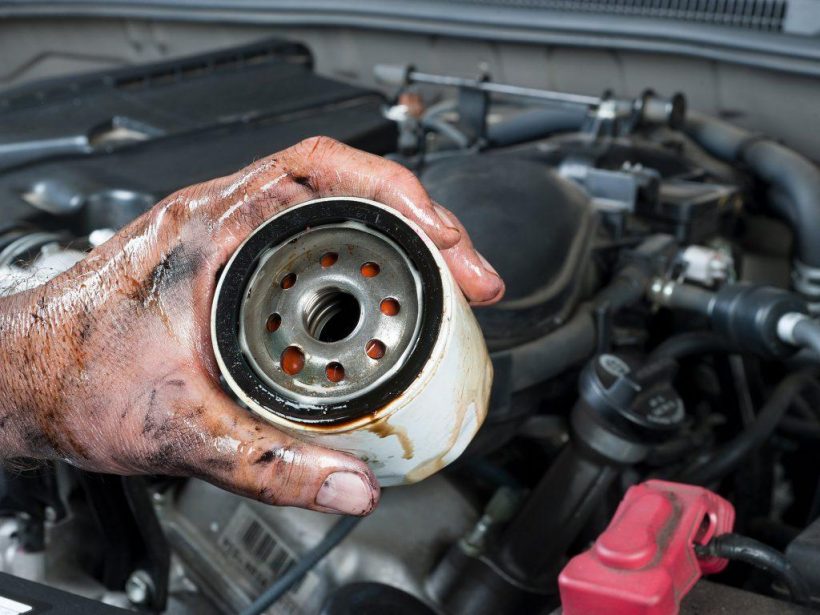
The next step is to change your oil filter. It’s considered good practice to change your oil filter at the same time as an oil change, which makes sense if you consider the filter’s purpose. An oil filter is supposed to remove any particles that could damage your engine as the oil begins to break down. Over-using an oil filter is asking for an easily-prevented problem.
To change your filter, keep the oil pan underneath your vehicle and carefully locate the oil filter. It’s a cylindrical part that can come in a variety of colors, depending on the company that made the part. Using a filter wrench, loosen the oil filter by turning it counterclockwise. Once loose, use your hands to remove the oil filter and install your new one.
It’s also a good idea to apply a small amount of the motor oil to your new oil filter’s gasket before moving on. This prevents the gasket from cracking, sticking, or causing oil leaks. From there, you simply tighten the brand new oil filter using your hands.
Adding new motor oil
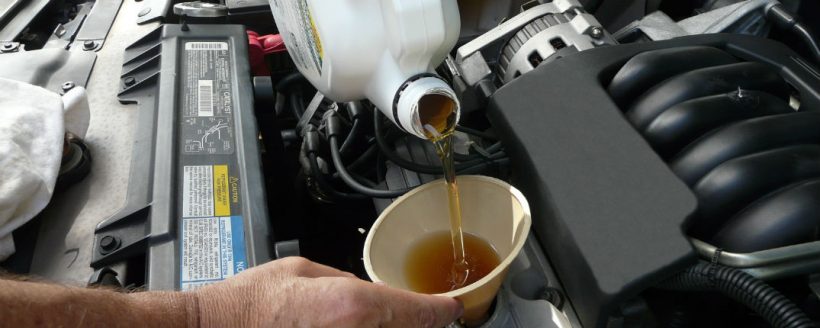
From here, the job is as simple as reading your manual and following directions. As a novice, it’s a good idea to check that the oil you’ve purchased is compatible with your vehicle. Your manual should make it clear the amount and the grade of oil you’ll need to make your car ride smoothly.
Identify your oil-filler cap under the hood of your vehicle, loosen it, and slowly fill the oil into the tank. This is much easier with a funnel if you can get your hands on one, and allows you to avoid any spills. If you do happen to spill some when pouring, use the spare rag to wipe them away. Secure the cap, and start your vehicle once everything is cleaned up; this will allow the new car oil to circulate in the entire system.
However, don’t start driving the vehicle anywhere until you confirm the oil level. The way you check your levels is to locate and remove the dipstick under the hood of your car, clean it with a rag, reinsert it briefly, and pull it out once more to take a reading. There will be two small holes on your dipstick, and you want your oil to be between those marks. Both too much oil and too little oil can damage your vehicle.
What about the rest?
Changing your engine oil is the most complicated part of the process – and once you’re done with that, you’re generally just using a topical spray on certain trouble areas that can cause inconveniences as you drive.
A lithium-based spray grease works wonderfully for all of these parts, both lubricating joints and preventing the parts from rusting. You can use the spray on the joints of your door, your windshield wipers, and your hub caps whenever you notice one of these areas causing you trouble. It’s easy enough to treat all of these areas at once.
Importance of lubrication
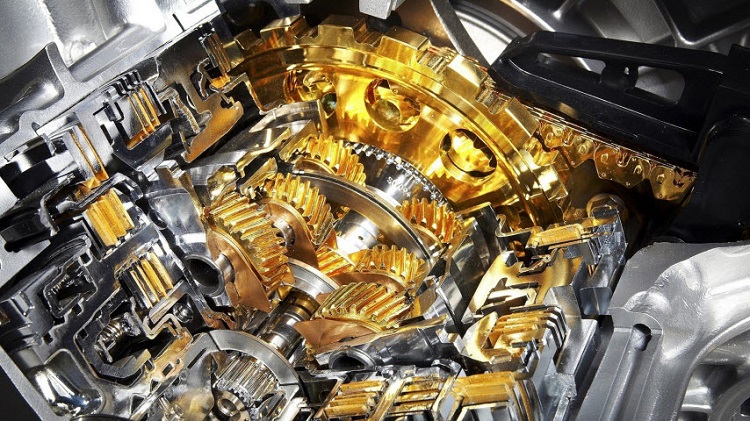
- Lubrication ensures parts of the car are protected against corrosion
- It reduces mechanical energy losses
- It increases water tightness
- It reduces wear on the various components that rub together
- Lubrication eradicates the need to remove dirt deposits and impurities
- Good lubrication decreases the temperatures of vehicles.
When should each car part be lubricated?
- Oil and filter change including chassis lubrication should be carried after 5000 km which is equivalent to three months drive.
- Wheel balancing and tire rotation should be checked after 10,000 km or during the next oil change
- Brake lubrication should be carried out during the next oil change or after 10000km
- Fuel filter replacement The filter should be changed more frequently or during the next oil change
- Cooling system flush and refilling should be done after 8000 km
- Engine belt replacement should be done between 100,000 to 160000 km
- Wheel alignment should be done between 20,000 to 40,000 km
- Automatic transmission service should be done after every two years
- Fuel filter should be checked after 40000 km
You should write down somewhere the date you changed your car oil and the miles your vehicle has traveled so that you remain accurate of the next date you should change the oil.

